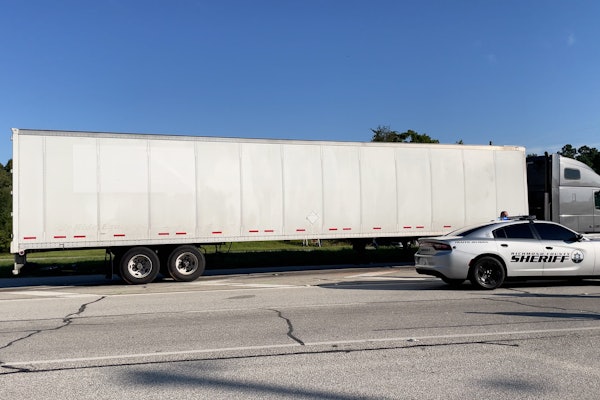Trailer orders for March saw a decline month-over-month and year-over-year, according to data from ACT Research and FTR Transportation Intelligence.
ACT said preliminary net trailers orders dipped “nominally” from February, coming in at 13,600, whilst FTR said March trailer orders declined by 7,659 units from February, a 38% month-over-month decline to 12,313 trailers.
 U.S. trailer net ordersACT Research
U.S. trailer net ordersACT Research
In a year-over-year comparison, ACT said March orders decreased by 24%, while FTR indicated an 18% decline, leaving trailer orders 25% below the average for the last 12 months.
Jennifer McNealy, ACT director of CV market research and publications, said that compared to the data from a year ago, which was influenced by pent-up demand that has since been fulfilled, the current trend shows a more subdued level of order intake. However, this subdued activity aligns with expectations, she said.
This also echoed FTR chairman Eric Starks’ comment in early April on how despite order levels in March being “below the historical average,” it remained in line with seasonal trends.
[Related: Class 8 truck orders dipped in March, in line with seasonal trends]
Despite an ongoing challenge of weak profitability for for-hire truckers, McNealy noted that net orders for trailers remain steady.
McNealy also pointed out that commentary from trailer manufacturers and suppliers through the past several months have observed a slowdown in orders, with orders at a “more tepid pace” compared to the last few years.
Current results reinforce ACT’s thesis that when fleets are not profitable, their capacity or willingness to invest in equipment is “muted,” McNealy pointed out.
This situation is further exacerbated by a pre-buying trend of power units ahead of the U.S. Environmental Protection Agency’s implementations of regulations for 2027. Starting from the model year 2027, the U.S. Environmental Protection Agency plans to implement stricter regulations on greenhouse gas emissions for heavy-duty vehicles.
Consequently, cancellation of orders remain high, and the decision-making process regarding how to allocated limited capital expenditure funds is currently favoring options other than purchasing trailers, McNealy said.
Trailer production
FTR’s data showed that trailer produced increased by less than 1% month-over-month in March to 23,505 units. Production was down 21% year-over-year, but still in line with the average production level from the past three years.
“With orders coming in below production levels, backlogs in February fell somewhat, shedding more than 11,500 units to end at more than 151,000 units,” said Starks. Due to an uptick in production and a decrease in backlogs, there has been a slight reduction in the ratio of backlogs to the rate of production, which currently stands at 6.4 months.
He explained that while this ratio is slightly lower than the average level observed in the latter half of 2023, it remains higher than the historical average before 2020.
“The current ratio suggests that, overall, trailer manufacturers have little incentive to alter production levels in the near team,” Starks said.
ACT remains “cautiously optimistic,” and don’t believe it will be catastrophic for trailer markets in general, but noted that it has been “a year of transition.”
“While some specialty segments have no available build slots until late in 2024 at the earliest, the industry’s largest segments remain under pressure,” McNealy said. It’s expected that cancellations will continue to fluctuate, as dealers and fleets adjust their inventory and prioritize immediate needs.











